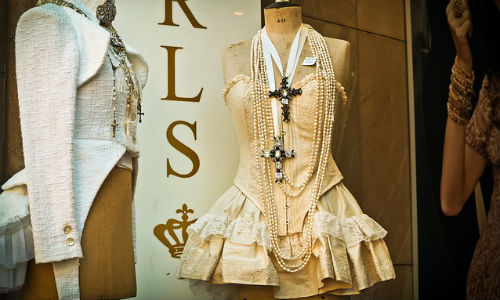The fashion industry offers an exciting and dynamic area for business reporters to explore new story ideas. This blog outlines five new angles to pursue while writing on this industry.
Explore the data
As you are scouting for story ideas, take a look at the following numbers from a recent report issued by the United States Congress Joint Economic Committee:
- The fashion industry is a $1.2 trillion global industry.
- Consumers spend $250 billion annually on fashion items.
- Over two-thirds of U.S. fashion designers live in New York and Los Angeles.
- Nearly 2 out of 10 manufacturing firms in the Los Angeles area work in the apparel industry.
Look at the variety of jobs behind the fashion
Over the last two decades, the numbers of U.S. workers employed by the fashion industry has declined sharply. In 1990, the U.S. housed 940,000 apparel manufacturing jobs. That figure shrunk to 144,000 in 2013. In 2014, U.S. apparel exports totaled $6 billion versus $82 billion in imports, according to the U.S. Department of Commerce International Trade Administration.
Meanwhile, the number of people working as fashion designers in the U.S. has risen 50 percent in the last 10 years, up to 17,000 professionals.
Reporters should understand that a wide range of jobs exist within the fashion industry. In addition to manufacturing jobs—tailors, sewing machine operators and textile machine operators—companies employ highly paid market research analysts, computing professionals and marketing specialists.
Investigate sustainable fashion
Growing numbers of fashion companies are catering to consumers who want items that come from sustainable sources. Fashion designer Orsola de Castro leads Fashion Revolution, a nonprofit organization. De Castro notes that “consumers and the public are frustrated with everything being Prada or Primark; sustainable fashion is an interesting and viable fashion trend.” For instance, footwear made from wool is gaining traction, according to Guardian Sustainable Business. If you are interested in textile waste, look into The Renewal Workshop, a nonprofit partnering with fashion companies to refurbish garments with minor defects such as broken zippers.
Report on the disposable fashion trend
The average U.S. household spent $1,786 on apparel and related services in 2014. Disposable fashion—inexpensive, of-the-moment apparel—is becoming a large segment of the market. Explore what impact the trend of disposable fashion has on the economy and environment. One expert in this National Public Radio piece noted that the cheaper the fashion, the more likely we are to dispose of it. The Environmental Protection Agency reported that in 2013, Americans discarded 12.8 million tons of apparel.
Pursue made-in-America stories
Another angle for business reporters is the made-in-America phenomenon. Apparel makers embracing the movement include American Giant, the San Francisco-based hoodie maker with factories in Georgia and South Carolina. Theory manufactures its jeans in America; Michael Stars makes its high-end tanks and T-shirts in California and the jean-maker 7 For All Mankind produces much of its collection on American soil. This Huffington Post article offers a list of smaller companies advancing this trend.
Reporter’s Takeaway
• Statistics from the United States Congress Joint Economic Committee point to the fashion industry’s enormous impact on the global economy, as well as the drift toward offshore production.
• While the overall number of apparel industry jobs in the U.S. has shrunk, there is good news as well. The number of American fashion designers has doubled in the past 10 years, as well as high-paid, non-manufacturing jobs.
• Growing apparel industry trends for reporters to follow include sustainable fashion, disposal fashion and the Made-in-America movement.











